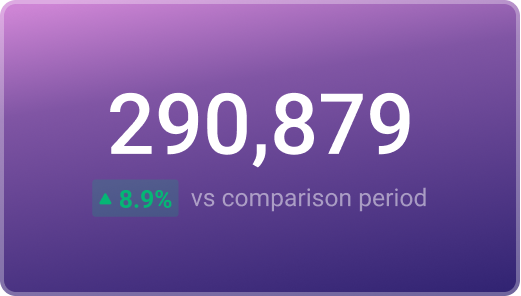Track all of your key business metrics from one screen
GET STARTED
 Xero
Direct Costs
Xero
Direct Costs Direct Costs metric refers to the expenses incurred specifically for the production of goods or services. These costs are directly tied to the production process and can include raw materials, labor costs, and other expenses directly related to production. #Xero #DirectCosts
With Databox you can track all your metrics from various data sources in one place.

Used to show a simple Metric or to draw attention to one key number.
Databox is a business analytics software that allows you to track and visualize your most important metrics from any data source in one centralized platform.
To track Direct Costs using Databox, follow these steps:
 Goals
Goals Scorecards
Scorecards Metric Digest
Metric Digest Metric Builder
Metric Builder Data Calculations
Data Calculations Performance Screen
Performance Screen